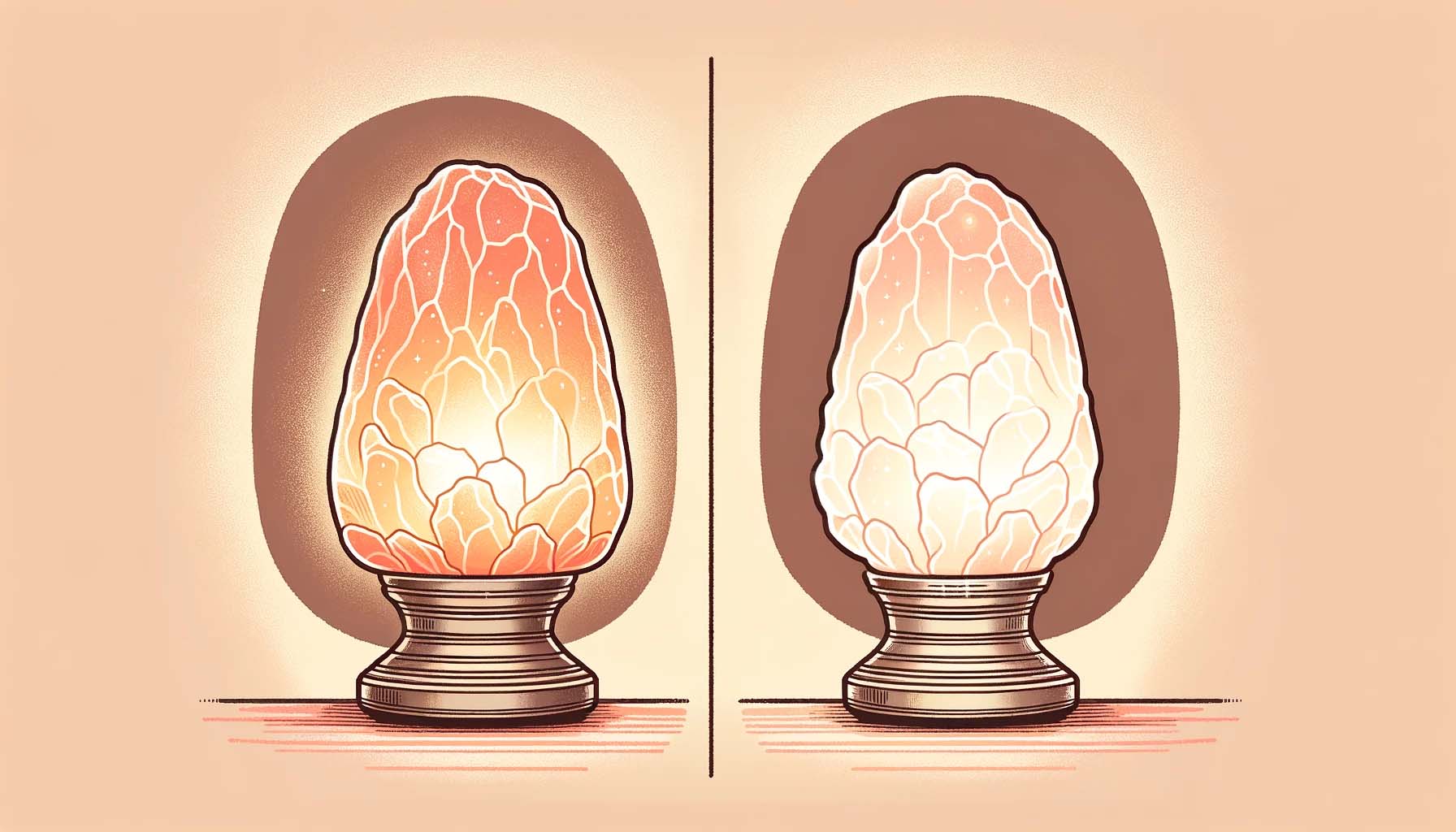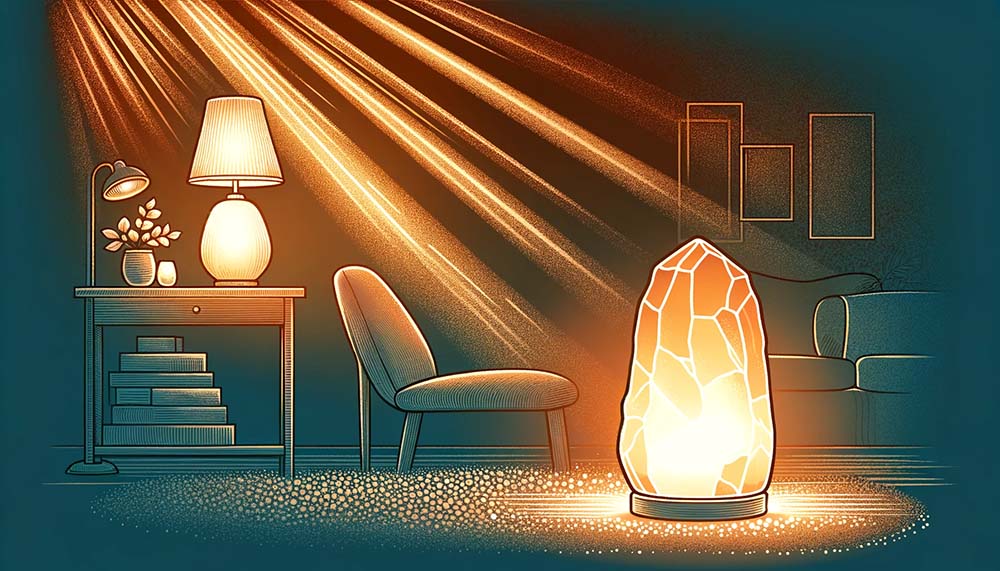Are you the proud owner of a Himalayan salt lamp, or considering purchasing one? These captivating decor pieces have surged in popularity, praised for their soothing ambiance and potential health benefits.
However, with the rise of counterfeit products flooding the market, it’s crucial to ensure you have an authentic salt lamp to reap the full advantages.
In this article, we’ll delve into nine telltale signs that your Himalayan salt lamp may be a fake. From dubious origins and unrealistic durability to suspicious prices and lackluster benefits, we’ll equip you with the knowledge to differentiate between genuine and counterfeit salt lamps.
By the end of this guide, you’ll be a savvy salt lamp shopper, ready to illuminate your space with the authentic essence of the Himalayas.
1. Not sourced from Pakistan
True Himalayan salt lamps are made from salt crystals sourced from the mines in the Punjab region of Pakistan, near the foothills of the Himalayas. This is the only place where real Himalayan pink salt is found.
If a salt lamp is labeled as “Himalayan” but lists a country of origin other than Pakistan, or doesn’t specify the origin at all, it’s almost certainly not an authentic Himalayan salt lamp. Genuine sellers will always disclose that their salt is sourced from Pakistan.
To avoid imitation products, look for labels or descriptions that clearly state the salt is from Pakistan. A reputable seller of authentic salt lamps will be transparent about the source of their salt and proud to share that information with potential buyers.
2. Your salt lamp is unbreakable
If you’ve accidentally dropped your salt lamp and it didn’t chip or break at all, that’s a major red flag. Authentic Himalayan salt lamps are made from fragile, natural salt crystals mined in Pakistan. They are not tough and durable like plastic or other synthetic materials.
Real salt lamps can easily chip, crack, or even shatter if handled roughly or dropped from a height. Some minor chipping is normal and expected, especially during shipping and handling. If your lamp survives a fall completely unscathed, it’s likely a fake made from a much sturdier material disguised to look like salt.
So while you definitely don’t want to intentionally drop or damage your salt lamp, a little fragility is actually a good sign when it comes to authenticity. A real Himalayan salt lamp is a natural, delicate crystal – not an unbreakable decor item.
3. The price is too good to be true
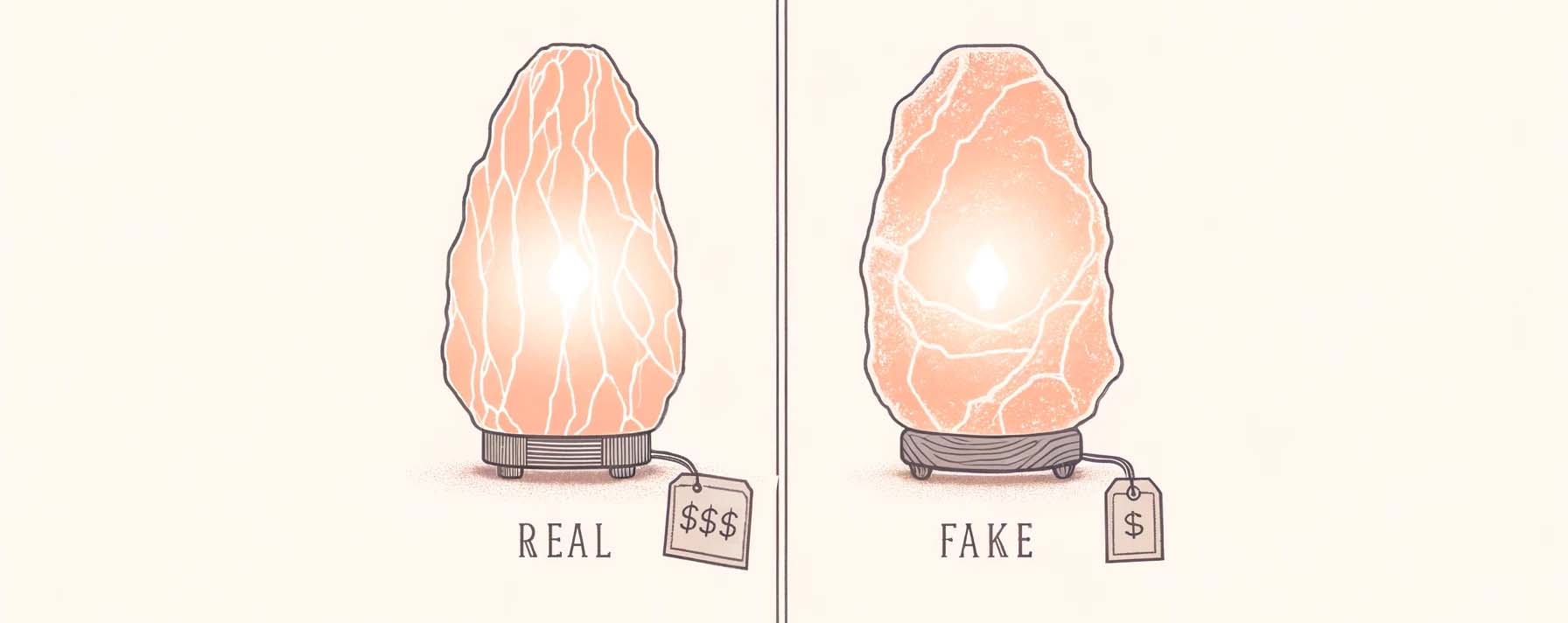
If you come across a Himalayan salt lamp that seems incredibly cheap, be cautious. Authentic salt lamps are not inexpensive due to the costs associated with mining, crafting, and transporting the salt from Pakistan.
On average, a genuine Himalayan salt lamp will cost around $40-60 for a 5-7 lb lamp. If you find a lamp selling for significantly less than this price range, especially online, it’s likely a fake or an imitation made from cheaper materials.
While everyone loves a good deal, remember that if the price seems too good to be true, it probably is. Quality Himalayan salt lamps come at a fair price, so be wary of suspiciously cheap options that may not provide the same benefits as the real thing.
4. No warranty or return policy
Reputable companies that sell authentic Himalayan salt lamps typically offer a warranty or return policy due to the fragile nature of the product. Salt lamps can be damaged during shipping or handling, so trustworthy sellers are prepared to replace or refund defective or broken lamps.
If the seller you’re considering does not provide any warranty or has a strict “no returns” policy, that’s a red flag. Legitimate businesses stand behind their products and offer some form of protection for the buyer.
Before making a purchase, always check the company’s return and warranty terms. A generous policy is a good sign that the seller is confident in the authenticity and quality of their salt lamps.
5. Your lamp doesn’t “sweat”
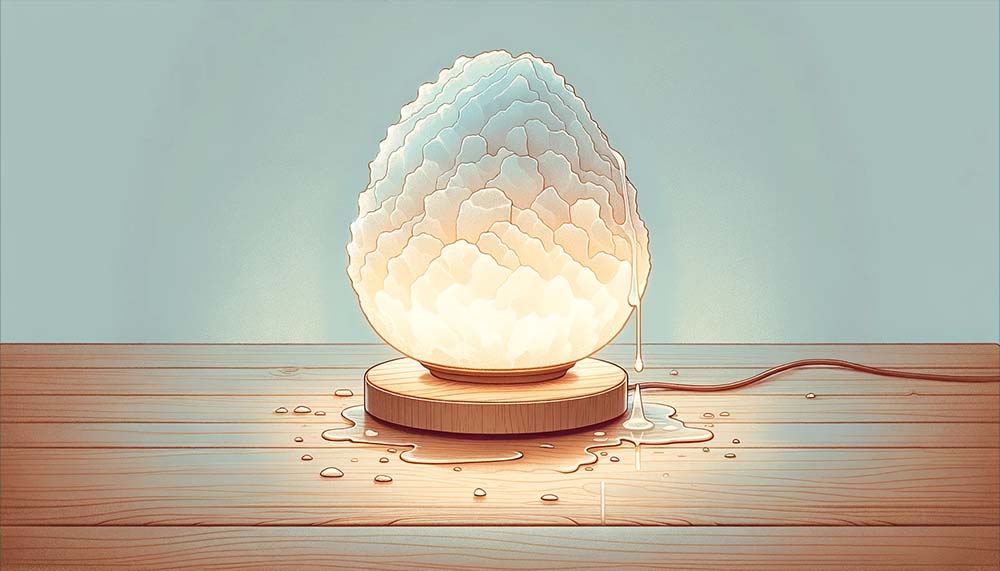
Authentic Himalayan salt lamps are hygroscopic, meaning they naturally attract moisture from the air. When the lamp is lit, the heat from the bulb combines with this moisture, causing the salt to dry out and form small beads of water on the surface. This process is often referred to as salt lamp “leaking”, “sweating,” or “crying.”
The more humid the environment, the more likely you are to see this sweating effect on a genuine salt lamp. If your lamp never seems to develop any moisture, even in damp or humid conditions, it could be a sign that it’s not made from real Himalayan salt.
Keep in mind that some sellers may treat fake lamps with chemicals to mimic this sweating effect, but a genuinely hygroscopic salt lamp will consistently attract moisture and sweat, especially in high humidity. If your lamp stays dry no matter the environment, it’s a red flag that you may have a counterfeit on your hands.
6. The glow is too bright and even
One of the most appealing qualities of an authentic Himalayan salt lamp is the soft, warm glow it emits. Due to the varying densities and thicknesses in the natural salt crystals, the light shining through a real lamp will be slightly uneven and diffused, creating a calming ambiance.
If your lamp gives off a bright, uniform light that resembles a normal lamp or lightbulb, it’s likely not the real deal. Genuine salt lamps are not designed to be a primary light source, but rather to provide a subtle, soothing illumination.
Another way to test this is by rotating your lamp while it’s lit. If the light pattern on the wall changes and flickers as you turn the lamp, that’s a good sign you have an authentic salt lamp. A fake lamp will typically emit the same, steady light from all angles.
7. Large lamps that are lightweight
While salt lamps come in various sizes, it’s important to remember that salt is a hefty mineral. If you have a large lamp that feels surprisingly lightweight or easy to lift, it could be a red flag that it’s not authentic.
A genuine Himalayan salt lamp, especially a bigger one, should have some noticeable weight to it. If your salt lamp is sizeable but doesn’t seem to match that size in terms of weight, take a closer look. Real salt lamps will be dense and substantial.
Fake manufacturers may use lighter materials to mimic the look of a salt lamp without the added bulk. If your lamp is unexpectedly easy to move or handle despite a big size, there’s a good chance it’s an imitation product rather than actual Himalayan salt.
8. Strange colors
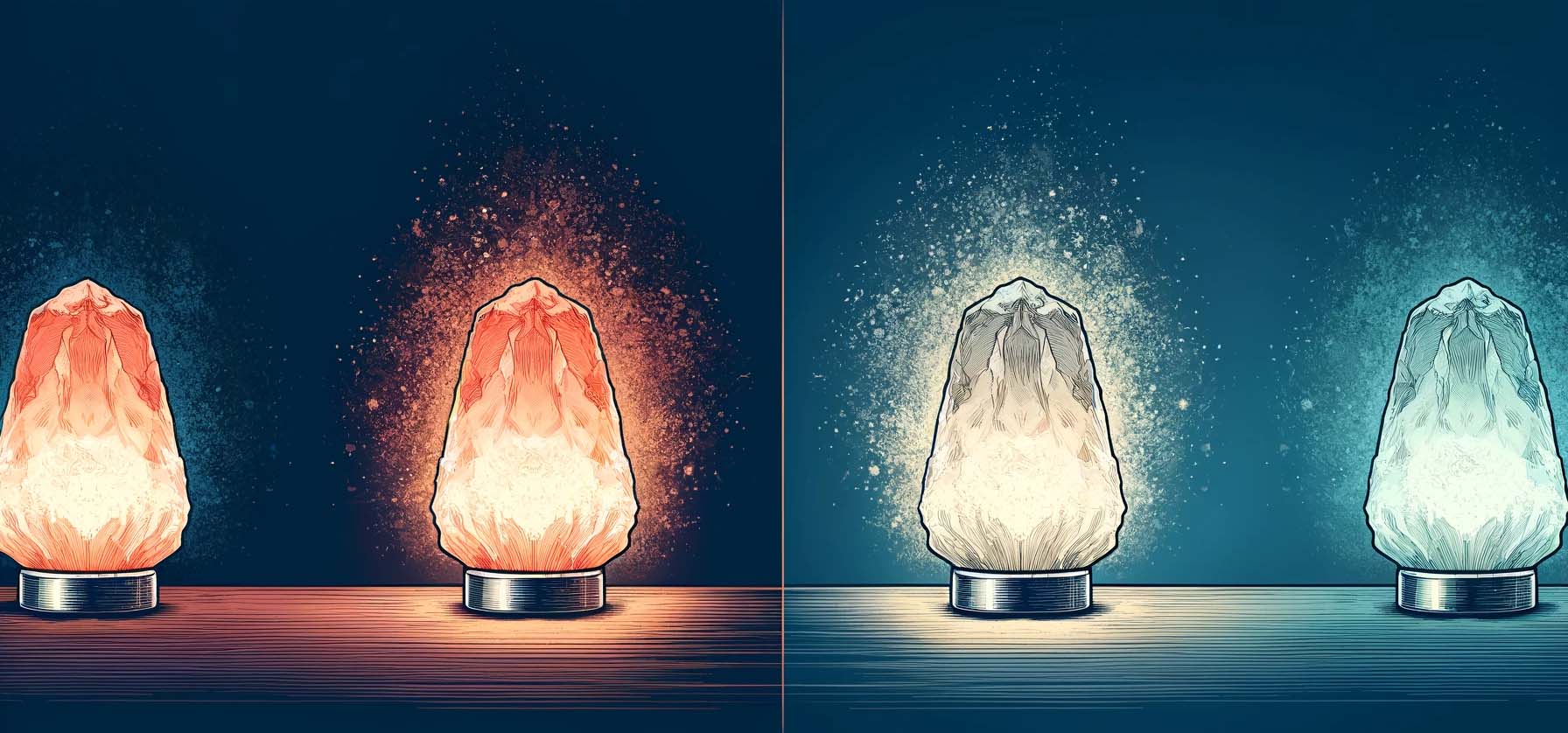
Authentic Himalayan salt lamps typically have a distinctive pinkish-orange hue, though some variation in color is normal. If your lamp is a strange shade that doesn’t look quite right, it could be a fake.
Watch out for colors that seem too uniform, bright, or artificial. Real salt lamps will have a natural-looking, earthy color palette with some slight variations throughout, not a pure pink or red tone.
Lamps with an overly shiny, plastic-like appearance are also suspect. True Himalayan salt has a more organic, matte look and feel. If the colors or finish of your lamp appear synthetic or “off,” trust your instincts and scrutinize it further for other signs of a counterfeit. Also be sure to check our our guide covering the 5Main Himalayan Salt Lamp Colors.
9. You don’t notice any benefits
Take this one with a grain a salt—“haha”. While individual experiences may vary, many people report positive effects from using a Himalayan salt lamp, such as improved air quality, better sleep, and reduced allergies or asthma symptoms. These benefits are attributed to the lamp’s alleged ability to produce negative ions and purify the air.
If you’ve been using your salt lamp consistently for a few weeks in an appropriately-sized room and don’t notice any difference in your environment or well-being, it could be a sign that your lamp is not authentic. However, this alone doesn’t necessarily mean you have a fake, as benefits can be subtle and some people may be more sensitive than others.
To give your salt lamp the best chance of providing noticeable benefits, make sure it’s an appropriate size for the room, and keep it lit for at least several hours a day. A general rule of thumb is that 1 lb of salt lamp can cleanse the air in approximately a 4′ x 4′ area.
Where to Buy a Authentic Salt Lamp

To ensure you’re getting a genuine Himalayan salt lamp, it’s important to purchase from a reputable seller. Look for companies that specialize in salt lamps and are transparent about their sourcing and manufacturing processes.
A credible salt lamp retailer should clearly state that their lamps are made from salt sourced in the Punjab region of Pakistan, near the foothills of the Himalayas. They should also offer a warranty or generous return policy, as a sign of confidence in the authenticity of their products.
When shopping online, be cautious of very low prices, as this can be a red flag for fake or low-quality lamps. Also, check customer reviews to gauge the experiences of other buyers.
Some reputable online retailers of authentic Himalayan salt lamps include:
- So Well Made
- Himalayan Salt Shop
- The Salt Lamp Shop
- Salt Lamp Hut
For the best selection and quality, visit a specialty store that focuses on natural health products or Himalayan salt. This way, you can see the lamps in person, feel the weight and texture, and ask questions about sourcing and authenticity.
Want to find the perfect authentic salt lamp for your space? Check out our roundup of the best genuine Himalayan salt lamps on the market, with options for every style and budget.
Final Thoughts
Knowing how to identify a genuine Himalayan salt lamp is crucial to ensure you’re reaping the full benefits of this captivating decor piece. By understanding the key signs of authenticity, such as the salt’s origin, fragility, price, warranty, and physical characteristics, you can confidently navigate the market and avoid falling victim to counterfeit products.
Remember, a true Himalayan salt lamp is a natural, delicate crystal sourced from the Punjab region of Pakistan, emitting a soft, soothing glow and potentially offering a range of health benefits. When in doubt, always purchase from reputable sellers who are transparent about their sourcing and stand behind their products with warranties or return policies.
With this knowledge in hand, you’re now equipped to illuminate your space with the authentic essence of the Himalayas, enjoying the mesmerizing beauty and potential wellness advantages of a genuine salt lamp.

